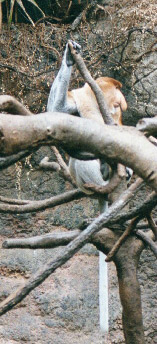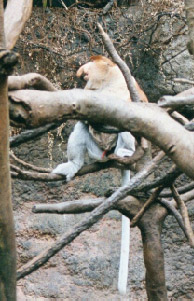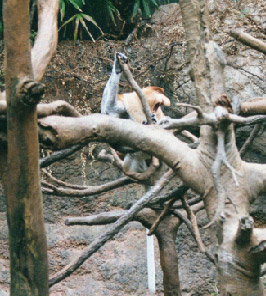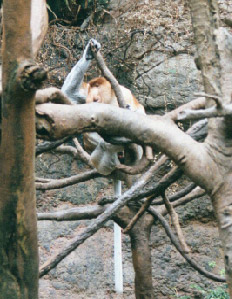The average body mass for an adult male proboscis monkey is between 16 and 22 kilograms, and for the females it is between 7 and 12 kilograms. This is a sexually dimorphic species, especially in body size (Kern, 1964). The males of this species has a large pendulous nose which is smaller and more turned up in females. This nose of the male assists in enhancing vocalizations acting as an organ of resonance (Ankel-Simons, 2000). The proboscis monkey has interdigital webbing, and may be an adaptation for swimming. The pelage color is pink and brown with red around the crown, nape, and shoulders, and with gray on the arms, legs, and tail (Kern, 1964). There are cream-colored patches on the cheeks and throat. The males have a black colored scrotum and a penis which is red in color (Ankel-Simons, 2000). When the infants are born their faces are a vivid blue color (Pournelle, 1967). At age 2.5 months the facial color of the infant darkens to a sooty dark gray color, and then at 8.5 months the gray color starts to lighten to the flesh color of the adult (Pournelle, 1967).
RANGE:
The proboscis monkey is found on the island of Borneo. This species prefers to live in nipa-mangrove-mixed forest, mangrove forest, and lowland forest (Kawabe and Mano, 1972). In Sarawak it was found that this species prefers to live in riverain and mixed diterocarp/high kerangas forests (Salter et al., 1985). It has been suggested that this species is restricted to the coastal areas and areas nears rivers because the interior has soils which are low in minerals and salts, which are needed in the diet (Bennett and Sebastian, 1988). This species avoids areas with heavy deforestation, such as agricultural land (Salter et al., 1985).



